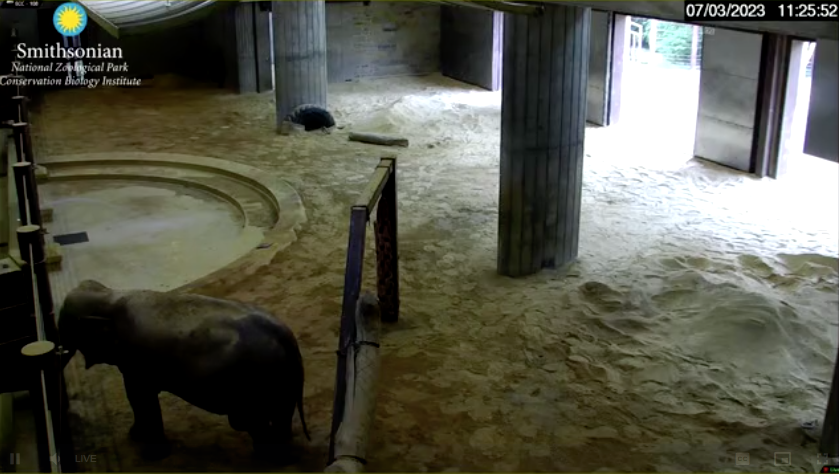Home » Posts tagged 'VirtualTour'
Tag Archives: VirtualTour
Virtual & Augmented Reality
Virtual Reality (VR) in classrooms can reform education and contribute fundamentally to successful global collaborations, especially in accomplishing the United Nations’ Sustainable Development Goals (SDGs). For this discussion, we should zero in on utilizing Google Earth Visits in K-12 education to address the Global Goals I’ve accomplished for my project, Global Goal 4: Quality Education.
Global Goals 4 expects to guarantee comprehensive and impartial quality education and advance deep-rooted learning open doors for all. VR devices like Google Earth Visits can assume a significant part in gathering this goal by giving vivid and intuitive growth opportunities that rise above customary study hall limits.
Google Earth Visits

Google Earth Visits is an instructive apparatus that permits instructors and students to investigate the world practically through 360-degree all-encompassing pictures. It will empower students to “travel” to different areas and experience virtual field trips. By utilizing VR headsets, for example, Google Cardboard or the Oculus Mission 2, students can feel present in those areas, regardless of whether they are many miles away.
Within this video provided by Google, we are able to look into the way Google Earth working with VR shapes our experience.
Upgraded Global Collaborations
VR can break social obstructions and cultivate multifaceted comprehension. By encountering better places, societies, and networks through VR, students can foster sympathy and appreciation for variety, prompting more agreeable Global coordinated efforts. VR can also work with constant cooperative tasks among students worldwide. For instance, students from various nations can collaborate on a virtual recreation of verifiable destinations or work together to tackle worldwide difficulties like environmental change or ecological preservation. Next, VR can establish language learning conditions where students can work on talking and listening abilities with local speakers from various nations, advancing language capability and intercultural correspondence. And finally, Through VR encounters, students can acquire a more extensive point of view on worldwide issues like poverty, inequality, and environmental degradation. This understanding can motivate them to become proactive worldwide residents and work together to address these difficulties.
Meeting Global Goal 4 – Quality Education
VR innovation permits students in underserved regions or far-off areas to get instructive encounters they probably won’t have. Virtual field excursions to galleries, verifiable destinations, and regular marvels can enhance their learning and advance a more comprehensive school system. Also, VR gives a seriously captivating and intelligent learning climate, which can improve students’ maintenance and comprehension of perplexing themes. It can make learning fun, starting interest and adoration for learning. VR can take special care of assorted learning styles, furnishing customized opportunities for growth to students with various capacities and learning inclinations. This inclusivity lines up with the rule of abandoning nobody, as underlined in the SDGs. And finally, VR can likewise be utilized for proficient improvement for instructors, empowering them to encounter new showing techniques, best practices and team up with teachers worldwide. This constant learning can work on the nature of schooling conveyed in homeroom.
Within a lesson plan employing Google Earth’s wonders, we have been given the following instructions…
“Teachers can use I’m Feeling Lucky and Street View in Google Earth to randomly select a location in the world and relate it to multiple content areas. Teachers can also choose to preselect a location that lends itself well to relevant standards and objectives using Search or Voyager Stories.”
https://storage.googleapis.com/gweb-earth/education/pdf/EN_PassportWarmUp_7thGrade.pdf
This captivating lesson, accompanied by its counterparts found within the provided link, seamlessly integrates the power of VR and Google Earth, culminating in a plethora of thrilling educational experiences for young minds.

Utilizing Google Earth Visits or comparative VR apparatuses in homerooms can add to practical worldwide joint efforts and accomplish Worldwide Global 4: Quality education. By cultivating compassion, breaking social boundaries, and giving admittance to different learning potentials open doors, VR can engage students to become dynamic members intending to worldwide difficulties and pursue a manageable future.
Virtual Field Trip – I love it!
I was recently allowed to do something I have never done before… I went on a Virtual field trip. At first, I didn’t know what to expect. So stepping into this, I was excited.
I was greeted with a link that was provided. (Linked below)
https://sites.google.com/a/stockton.edu/gsdlc/virtual-field-trips
And from there, I was given many options. I found interest in many things that I was scrolling past, but two caught my eye.
A LIVE ZOO ANIMAL WEBSITE & A PLANETARIUM


I was so excited about the live zoo footage, just being able to glimpse the animals’ daily lives. The elephants immediately caught my eye because they are my favorite. There are 7 elephants, Spike, Bozie, Kamala, Swarna, Maharani, Trong Nhi, and Nhi Linh. Here, you can see an elephant (I’m not sure which one) simply chilling and gazing upon something.

If you’re interested in getting an inside look into the life of these animals, I wouldn’t be afraid to click the link. Sometimes we forget that we are not the only species on this Earth. And it’s interesting to see how another species operates. The range of animals that they show is Elephants, Pandas, Lions, Black-footed Ferrets, and Naked mole rats.
Onto the planetarium, it’s labeled “An online planetarium that allows users to explore stars and planets across a roving map. A very cool instrument to encourage students to learn more about outer space.” From the first glimpse, you get an open field, but when you scroll above you, the sight is beautiful.
By clicking whatever floating item you see above, you’ll get a rundown of precisely what it is.

Virtual field trips are agreeable because of multiple factors. Right off the bat, they offer openness that conventional field trips can’t coordinate. These virtual encounters permit people to investigate far-off and distant areas, far-off everyday marvels, or verifiable milestones. Virtual field trips open up a world of possibilities by removing the constraints of physical travel, allowing people to visit places they might not have been able to otherwise. Second, virtual field trips are intended to be interactive, actively involving and immersing participants in the experience. Clients frequently have command over the course and speed of their investigation, empowering them to tap on objects for more data or participate in virtual exercises and recreations. This hands-on approach enhances the trip’s excitement and fosters a sense of discovery.
With many virtual outings accessible, covering different subjects like nature, history, artistry, and science, there is something to enthrall everybody’s inclinations. This variety ensures that there is always something new and intriguing to discover, keeping the experience fresh. Ultimately, the adaptability and comfort of virtual field trips upgrade their pleasure. Members can leave on a virtual experience whenever suits them without stressing over movement-coordinated operations or time limitations. This freedom permits individualized exploration and revisitation of exciting locations. In conclusion, virtual field trips are a fun and engaging way to learn about and explore the world around us because they combine accessibility, interactivity, multimedia elements, novelty, variety, and convenience.
